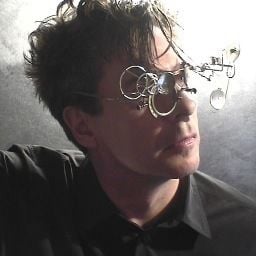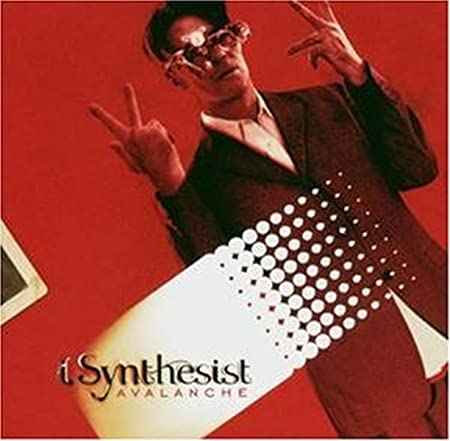Her at Your EDM, we’ve long carried the belief that EDM and other forms of electronic music wouldn’t be where they are with experimental artists. Mechanizing audio was originally the discipline of scientists, after all, and experimental musicians always seem to have that mad scientist arc.
Whether we’re talking Philip Glass, Brian Eno, Musique Concrète or more contemporary curious artists like Hans Zimmer, Venetian Snares, Aphex Twin and even Noisia, tinkering with sounds, mods and recording techniques factors in just as much as composition, emotion and vibes. It’s just the way these artists’ brains work, and thank goodness they do. Who else is going to push the boundaries of EDM and continue to move it forward? You don’t progress genres by throwing cake and humping the decks, that’s for sure.
Because there are so many famous-cake throwers and deck-humpers around and also because of the slightly elusive and complex nature of the experimental electronic artist, there’s a bit of a dearth of interviews with these beautiful minds on Your EDM. Luckily, we’ve finally reeled one in.
YEDM has been following Chris Ianuzzi for some time now, since his days in the equally experimental but more rock-oriented band Sluka to his ultra-experimental solo project I, Synthesist to his recent releases under his given name, the Olga In a Black Hole EP and Planeteria LP. With those symbiotic releases somewhat categorizable as IDM, Ianuzzi has pulled out all the stops with his upcoming LP, Maze. Released slowly as singles over the past six months, the full and fully tweaked Maze will be out in March.
Maze Ianuzzi both returning to form and going fully formless, with some of the tracks almost having a full-on rock or pop structure and others being borderline chaotic. With an almost joyful shirking of genre and style, Maze does more than just push the limits of music and sound; it laughs in the face of those limits.
With Maze set to be one of those albums that pushes the electronic music universe to expand just a bit more, it seemed a prudent time to see if we could sit down and pick one of these magnificent experimental minds, and luckily Ianuzzi agreed to a Q&A. What follows is one of the most descriptive and entertaining descriptions of an artist’s process we’ve heretofore seen on YEDM. If you’ve ever wondered how these guys think, Chris Ianuzzi has provided an excellent window. Hold on tight, embrace the chaos and read on.
Why did you want to release Maze in a series of singles rather than all at once? Have you found it easier or more difficult to do it this way? How many tracks are left to go?
All the tracks have essentially been released in one way or another. I always think creating music is part of a period in time. Music can be presented like a book with chapters. When someone suggested that I try releasing singles before the full album, I thought it was a great idea.
Albums require a lot of time and getting singles out does a couple of good things. First, it’s harder for people to forget about you in this low attention span world. It also gives time to allow the bigger work to develop. Lastly, releasing in singles gives the composer/producer a chance to make different versions after getting audience reactions. It creates a lot of pressure getting the stuff in the system on time and I think that’s good for me. I liked getting audience reactions from live shows, but we have a pandemic and things are different with no shows, so this creates a similar effect.
What sort of modifications have you made based on the feedback and your own observations?
December was the last month and the Piece called Maze was released. Now before the album is released I am making some developmental changes. In some cases its like “the Demos are done, lets see what I have to do.” “Live in Today” gave way to a newer version called “Sweet Over Time.” “Fantastic Hellos” is a remix of some elements from “Hello” on the Planeteria album. Then I made a different version for the album called “Cosmic Hellos” which is a combination of the two. (Laughs) I have to stop with that piece now! I’m becoming a “Hello” psycho.
I am also making a slightly different version of “March of Madness” for the album. It will be processed using the (Dolby) Atmos system, which is a form of 360 spatial audio. I’m working with some great people in Turkey making an AI video for the song too. Its going to be fantastic.
Let’s talk style a bit: a lot of these tracks on Maze seem, to the casual listener, almost to be the antithesis to your previous ventures Olga In a Black Hole and Planeteria. You’ve said, however, around the time that Olga…was released, it was meant to be a prequel to Planeteria in terms of both style and substance. Now that it’s mostly done and out, how do you think Maze relates to these other works?
I set up a challenge for myself with Planeteria. I felt that I wanted to move beyond song structure and repetitive grooves. I have been working with songs for many years with my I, Synthesist project. so, I was like a teacher not allowing old habits to be there. I think I went too far. I didn’t feel comfortable being myself sometimes. I think it was a good work-though and I went through the process and learned. I also wanted to get better with my modular synth.
By contrast the original “Hello” for example, was created in a day, it was during album mastering time. I really was like a rebel using a drum & bass groove with that. I just let loose at the end.
On closer listen, there are a lot of elements that are similar between Olga…/Planeteria and Maze, but they almost seem reversed. The ambient sound design and general woo feel are still there, for example, but they take a backseat to more organized noise elements and post punk-style vocals. Was that a conscious decision or sort of just how it flowed as you were working? What do you think it means for your overall sound and style?
I definitely had a flow (this time around). I have always worked with sound design as the core and inspiration of work. I started making music and wasn’t thinking about songs. “Infinite Prize” was definitely a song stuck in my head as I got going and then the vision of what a video could be (came to me).
As I continued making more music, song (structures) were definitely present. I then went to “Saturday Night Confession.” That was originally made for the I, Synthesist project but it was left hanging and I decided to finish it. “So Far, So Near” was originally meant to be instrumental. This new stuff was started before the release of Planeteria.
Tech talk time! The other thing that’s quite noticeable on the new tracks is the experimental side of things has been ramped up and thus the composition must have been a different process. Did you still work scoring-style due to wanting to cram all those different elements in or was it more mad scientist in the studio this time? Or both?
Both. The Mad Scientist is always there. I mean, take a look at the I, Synthesist pictures. Maze could be looked at as the fourth I, Synthesist album but I really felt the need to continue using my name and being comfortable with that.
![]()


You’ve got a healthy dose of drone going in these tracks, but it sounds quite different than in previous work. Did you do anything differently or come up with new techniques? How big was the Moog element this time around?
I am really into my modular synthesizers and always exploring. I don’t think of trying to make drone or anything. I find things that are telling me something. Funny, I didn’t have a Moog on Planeteria. I had a modular Moog a long time ago. I did recently get a Moog Subharmonicon and I used it for some elements in “So Far So Near.” The big use of it is in the end of “Infinite Prize.” The patterns developing and changing are all done with the Sub Harmonicon’s sequencer. I hope to add a Moog with the original Moog oscillators and filters later this year.
Even with the rock-style vocals and what pop fans might call more structured track formats, the Maze tracks seem to still be pushing the boundaries of experimental electronica. What new methods or arrangements did you use to get your results? How much was programmed with modern/digital methods and how much was analog/modulators?
I spent a lot of time in my life working in rock-oriented bands, using that song structure, so some elements are part of my vocabulary. I spent a lot of time doing scoring and working with classical as well as experimental. I have a (diverse) vocabulary.
I’ve also always been known for pushing envelopes. I am not consciously here trying to be a conquistador, it just happens. I have always loved analog synthesizers as well as some digital synths, et cetera. Combining these elements can be beautiful. I think certain elements have their place the way an orchestra has instruments.
How does the experimental/sound design end of things figure in?
The Maze track “Setagaya” is a good thing to talk about (to explain how I work). It’s not a song; it is more sound design-oriented but it does have melodic and rhythmic elements that a person can latch onto. I was in a band called Sluka that was signed with a Japanese label. After the second album was finished, I was making comments about how the sounds of Tokyo were inspiring to me. I started a project that was recording sounds of Tokyo on DAT and then sampling them and making the music that it inspired with the samples. Nobody knew what in the world I was talking about then. The project was televised in Japan showing how I made the recordings and worked through it. Still no one really got it. (laughs) This was 1990, the world has changed a lot since then. OK, (maybe I am a) conquistador. Or at least an envelope pusher.
(Flash forward to “Setagaya”) and I still had some of the sounds that I recorded and decided to make something current that used them. The sounds that I recorded were from an area of Tokyo called Setagaya. The train and any things about Setagaya are a great thing (to sample even now).
What, if any, are the more philosophical or story-telling themes of Olga…/Planeteria and Maze? What do you want listeners to take away from the overall experience of these three releases?
I would like people to go on a journey within themselves to find what the pieces and songs inspire. Olga In a Black Hole began by me using a Russian soft synth called Olga. I had a reverb plugin called the Black Hole made by Eventide. So, my Olga was being played through The Black Hole. This created a vision for me to latch onto for my own creative story.
Which track or tracks on the album do you think would be best for audiences to listen to in order to get a snapshot of what the album’s about? Best track for EDM crossover fans? Experimental fans?
I think that “Hunger” is definitely an EDM crossover thing, Some even find industrial elements in it. It is very danceable an I want to hear it loud in a club. Any of the “Hellos” could fit into an EDM/drum & bass type as well. “March of Madness” also has points that could fit into the EDM crossover. I am putting that song through developments right now. As I mentioned, song inspired a fantastic computer artist and sculptor in Istanbul, Turkey. He is making an AI video for it. It’s amazing to see this develop. It is very similar in approach to what Duran Duran did with “Invisible.”
Last week we entered my lyrics into his computer and we watched paintings develop from the computer’s dream state. This is going to be a very special work. We are working over Zoom. The video for “Infinite Prize” also was created through Zoom work as everyone was in a different location.
Pandemic production,
(On the experimental/post rock end of things), I think “So Far So Near” is a great example of using song structure in development but it really expanded with the three minutes of modular world at the end as well as internal stuff. The intro has some good analog stuff. The whole song is a little over ten minutes and I will keep it like that for the album. The single was split into Side 1 and Side 2.
Of course this project is still going and not totally finished yet, but what else is on the horizon for you? Do you plan to continue this series or go in a totally different direction?
I am very interested in performing. I want to dive deeper into the analog modular synth and digital modular synths. I want to make video and music. I make video backdrops for performances.
I don’t see (Maze or anything I do) as a series but just what I do, I want to make an invitation to go on a journey. No restrictions.
Aside from that, my daughter Nina started making the Maze track “Shuttles” and I helped her finish it. She is 13 now and a fantastic pianist so I hope to work with her more in the future.
Maze will release in full in March. The singles released thus far can be steamed on Spotify and Apple Music or purchased on Bandcamp. Stay tuned to Ianuzzi’s YouTube channel for the upcoming videos mentioned in the interview.
This article was first published on Your EDM. Source: Your EDM Q&A: Chris Ianuzzi Talks Envelope Pushing and the Endless ‘Maze’ that Is Experimental Music [Video]


Recommended Comments
There are no comments to display.
Join the conversation
You can post now and register later. If you have an account, sign in now to post with your account.